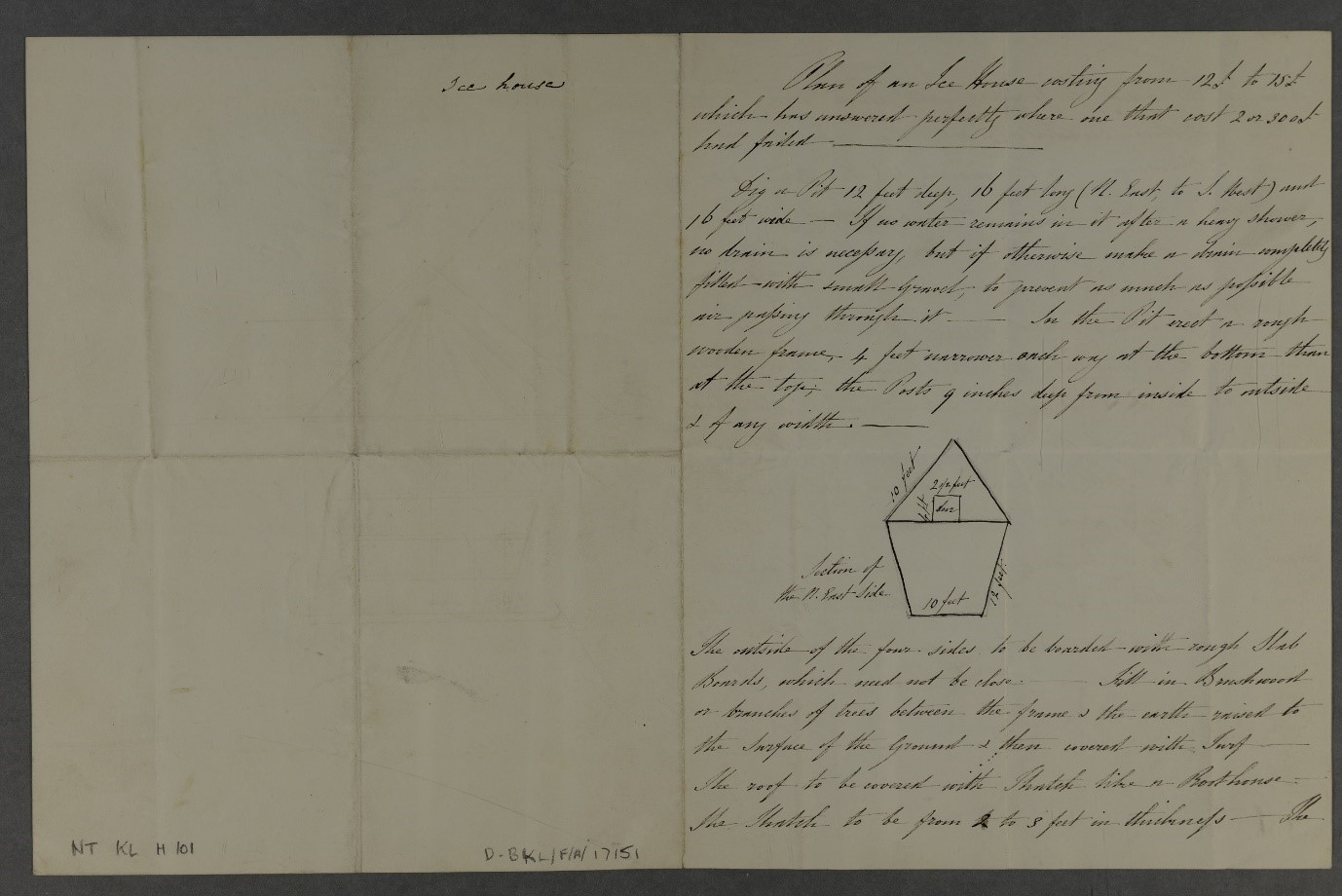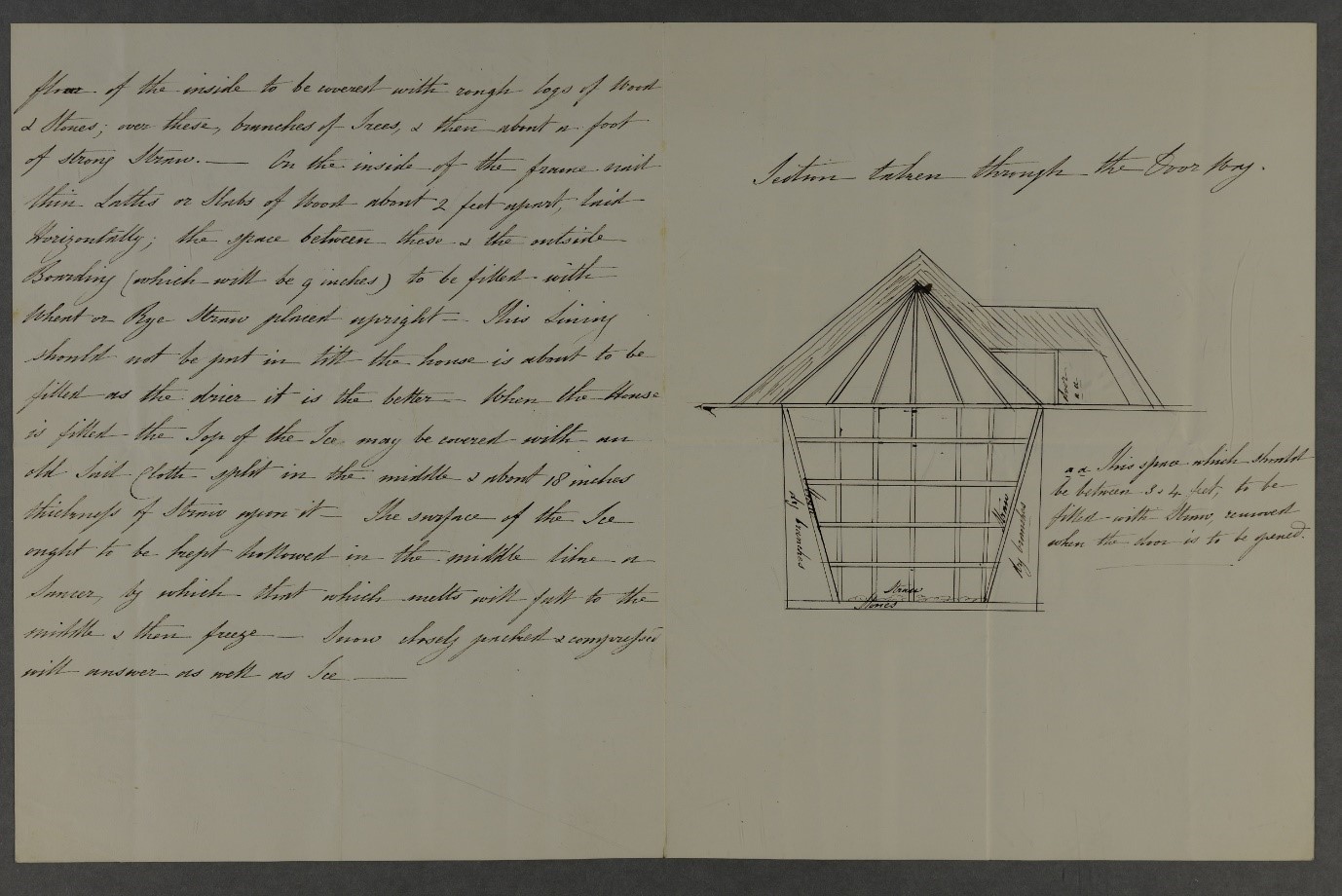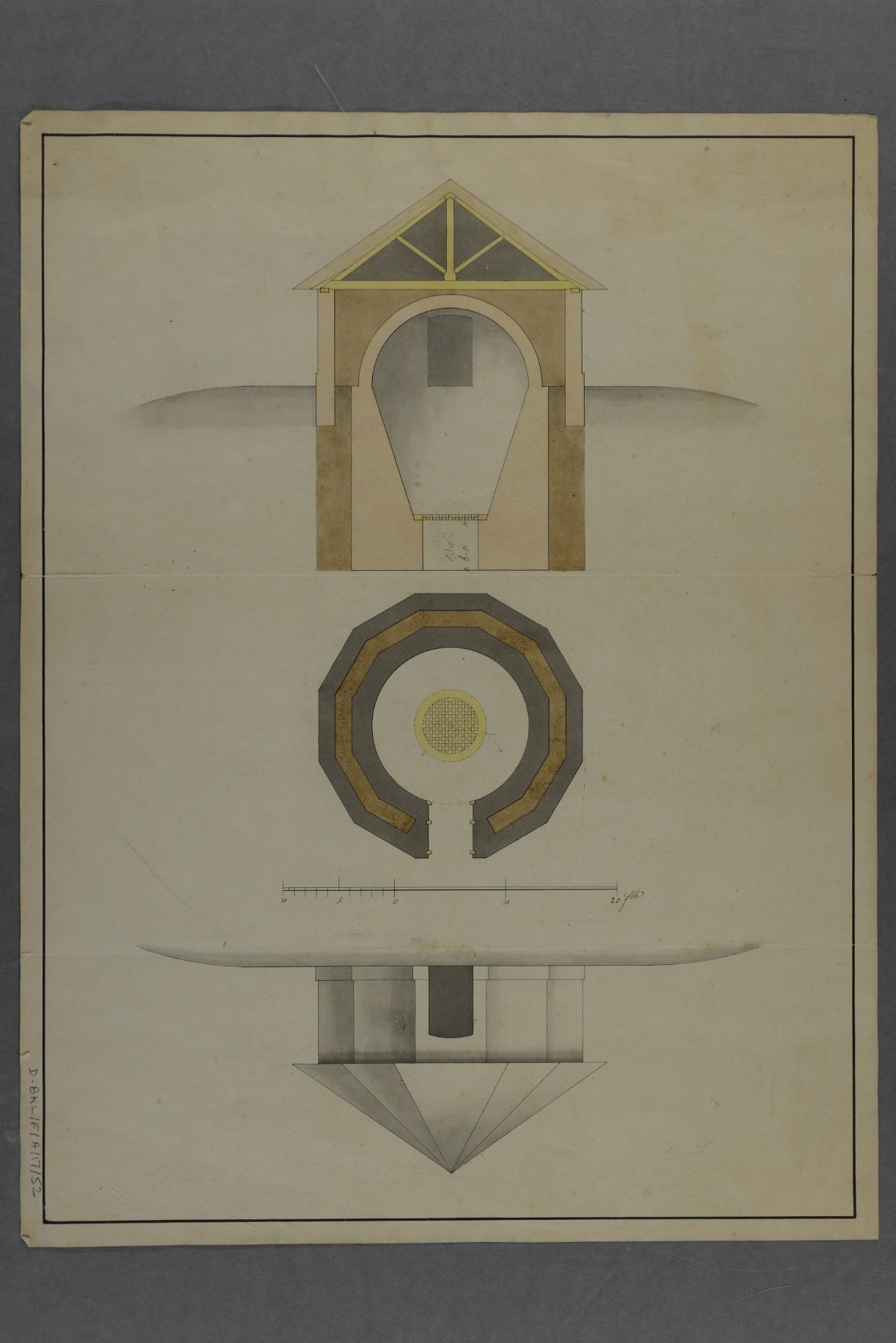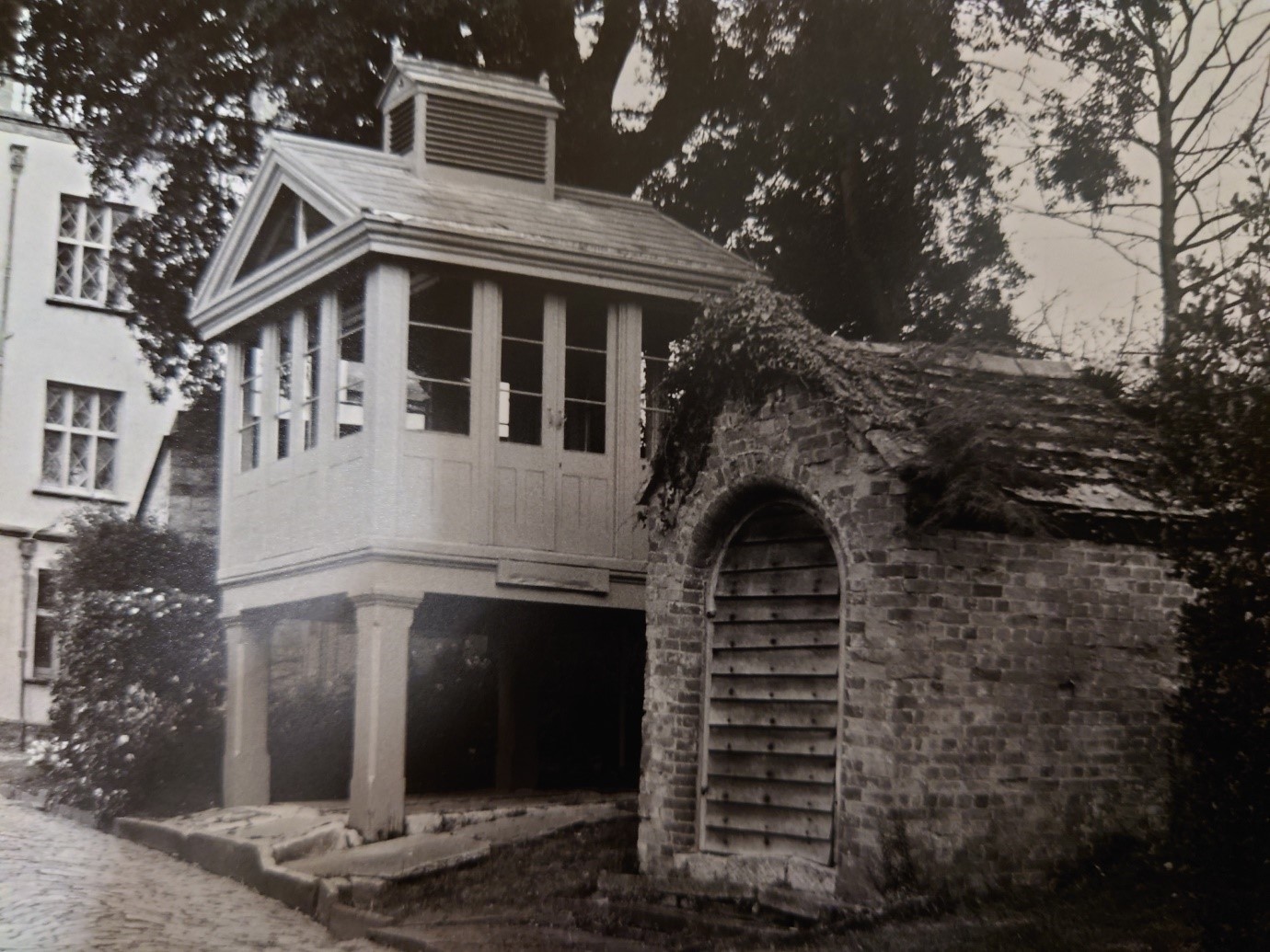What is an Icehouse? Icehouses, also known as ice wells, ice pits or ice mounds, were structures built fully or partially underground for the storage of ice and snow throughout the year, which in turn led to them being used for the preservation of food. In part one of this blog, we looked at how ice houses were made, and explored some Dorset examples. This time, we will take a look at the evidence of three more ice houses in Dorset…
—
As they fell out of fashion a lot of Ice Houses were destroyed. The destruction of the Ice House at Christchurch Priory Church is recorded in a letter, as shown below, from H.F. Blackford to Mr Druitt, dated 10th July 1906 which can be found in the Herbert Druitt archive (D-DRT/ACC10570/Box5). Herbert Druitt (1876-1943) was a Christchurch lawyer and antiquarian:

Dear Mr Druitt
We have now cleared away the whole of the mound at the rear of Christchurch Priory Church and I regret say that nothing of any value was discovered after you left. We found that the Ice house was built of 9” brickwork somewhat in the shape of an egg, extending about 4ft 6” above the ground level and 13ft below while the diameter was 5ft at the bottom and 10ft at ground level. I have now prepared plans and specifications for the erection of a new coal store on the site and the plans were passed by the Town Council last week so that we shall in all probability commence the erection in the course of a few days…
He later adds ‘I took a few photographs of the old Ice House before it was pulled down’ and the letter records ‘9 photographs returned 12th July’.
None of these photographs have been deposited with us at Dorset History Centre, and no evidence of the location of the Ice House can be found on Ordnance Survey maps of the area. Without this letter its existence and construction would not be known.
—
The Bankes of Kingston Lacy Estate is another archive which includes the plans and directions for the building of an Ice Well/House. Although none of the plans are dated it is thought they date around 1820. The plan below shows the existing Ice Well or House at Kingston Lacy (Fig.1) and the proposed alterations and additions (Fig.2) to it.

Whilst the documents below show the plans and detailed notes for the building of another Ice House at Kingston Lacy.


Plan of an Ice House costing from 12£ to 15£ which has answered perfectly where one that cost 2 or 300£ had failed.
Dig a Pit 12 feet deep, 16 feet long (N. East to S. West) and 16 feet wide – If no water remains in it after a heavy shower, no drain is necessary, but if otherwise make a drain completely filled with small Gravel, to prevent as much as possible [air] passing through it – In the pit erect a rough wooden frame, 4 feet narrower each way at the bottom than at the top, the Posts 9 inches deep from inside to outside & of any width.
The outside of the four sides to be boarded with rough Slab Boards, which need not be close – Fill in Brushwood or branches of trees between the frame & the earth raised to the surface of the ground & then covered with turf – The roof to be covered with Thatch like a Boathouse – The Thatch to be from 2 to 3 feet in thickness – The floor of the inside to be covered with rough logs of wood & stones, over these, branches of trees & then about a foot of strong stone – On the inside of the frame nail thin laths or slabs of wood about 2 feet apart, laid horizontally, the space between these & the outside Boundary (which will be 9 inches) to be filled with Wheat or Rye straw placed upright – This lining should not be put in until the house is about to be filled as the drier it is the better – When the house is filled the top of the ice may be covered with an old sail cloth split in the middle & about 18 inches thickness of straw upon it – The surface of the Ice ought to be kept hollowed in the middle like a saucer by which that which melts will fall to the middle & then freeze – Snow closely packed & compressed will answer as well as Ice.

Unfortunately, the location of either the original Ice House, or the new Ice House, at Kingston Lacy, if it was built, remains a mystery as the locations are not shown on any maps, nor are there any obvious remains. Indeed, no evidence has been found for an Ice House during any archaeological excavations on the estate.
—
Sherborne Castle Estate however does have a surviving Icehouse. The photo below shows the entrance to this Ice House, alongside a game larder, from a collection of images of Dorset buildings (photographed around 1990). It was built by Henry Plackett in 1780, to replace the one built in 1757, with the bricks used made on the estate. It was situated between the lake and kitchens, the lake being used to provide the ice in winter.

The invention of the refrigerator in the 19th Century, which became widely available to households at the beginning of the 20th Century, saw the decline of the brick lined Ice Houses and of the Ice trade. Some old ice houses have survived and been utilised for other purposes and during WW2, due to the way they were built, some were used as air raid shelters. However, many just fell into disrepair and have long since disappeared.


I was shown an ice house some years ago between Shroton and Childe -Okeford.
There is an ice house across the road from hood hill car park on the
Hanford road
There used to be one on the Meryrick estate near Bransgore but not allowed to walk there now so don’t know if it still exists
There is an ice house in the grounds of Parnham, grade 2.
There was an ice house in the grounds of Compton House (Gooden family seat) between Over and Nether Compton (‘twixt Sherborne and Yeovil) when we lived in Over until 32 years ago. The house, formerly housing the Butterfly Home, is now redeveloped into a number of homes. I suspect I would trespassing if I checked if its still there!
The wages ledger for the Kingston Lacy Estate, 1796-1829 (DHC ref: D BKL/E/E/1/1) contains several references to the ice houses including thatching, men working at the Ice House or with the ice cart and ale for men working at the Ice House, as well as a new lantern for going to the ice house.